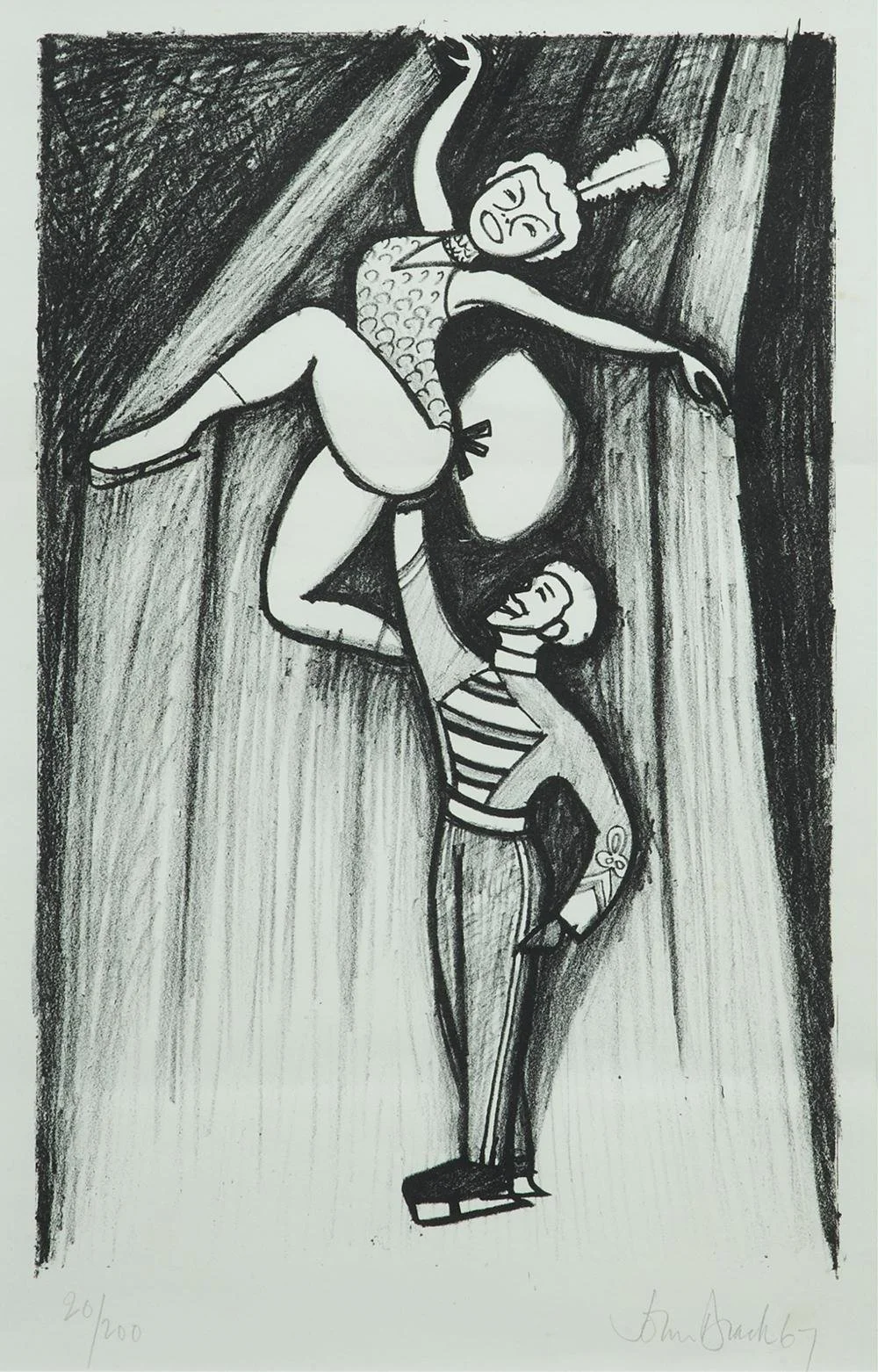John Brack
John Brack
Adagio, 1967
John Brack (1920-1999)
lithograph on wove paper; edition 26/200
image size 38 x 24 cm; frame 62 x 46 cm
numbered, signed and dated below image, watermark l.r., "GK" (Grahame King, printer)
Literature: Grishin, S., The Art of John Brack, Oxford University Press, Melbourne, 1990, vol. II, cat. pr17, illustrated page 258
Other notes: Other impressions of this print are in the following major public collections:
National Gallery of Australia - Acc. no 2005.965
Art Gallery of S.A - Acc. no 6711G37
Queensland Art Gallery - Acc. no. 2:0614A
Geelong Art Gallery - Acc. no. 1967.13
Ian Potter Museum of Art - Acc. no. 1989.0019.000.000.
$ 2,450 framed
enquire:
simon@ensemblefineart.com.au
0419 540 162
“…In ‘Adagio’… two dancers performing as ice skaters are caught suspended in the cold glow of a spotlight. The extreme artificiality and theatricality of the situation is stressed as the skaters negotiate the slippery and uncertain surface of the hard ice. The unnatural poses and the strain and tension are disguised, concealed behind false smiles; the pair seems bonded, yet it is an artificial union in which each is isolated and spiritually alone”. Sasha Grishin, 1990
John Brack is renowned as the artist who most succinctly captured the character of twentieth century Australian life. He grew up in Melbourne and studied at the National Gallery School during the 1940s. He was appointed head of the School in 1962 until 1968.
A cool, dispassionate observer of people and society, he has left behind several series of paintings of modern life which have achieved iconic status: images whose coolness, ambiguity and hidden complexity demand careful consideration from the viewer. With his exacting standards, rigorous technique and depth of scholarship, he also left his mark as a teacher on a generation of younger artists.
Major retrospectives of his work have been held at the National Gallery of Australia (1977 and 1999), Monash University Gallery (1981), and the National Gallery of Victoria (1987 and 2009). His work is represented in the collections of the National Gallery of Australia, all state and many regional galleries.

